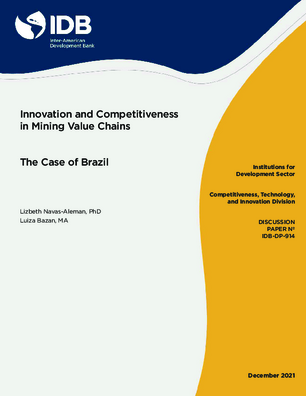Innovation and Competitiveness in Mining Value Chains: The Case of Brazil
Date issued
Dec 2021
Subject
Innovation;
Competitiveness;
Value Chain;
Investment;
Governance;
Science and Technology;
Mining Industry;
Export
JEL code
O13 - Agriculture • Natural Resources • Energy • Environment • Other Primary Products;
O31 - Innovation and Invention: Processes and Incentives;
Q56 - Environment and Development • Environment and Trade • Sustainability • Environmental Accounts and Accounting • Environmental Equity • Population Growth;
L72 - Mining, Extraction, and Refining: Other Nonrenewable Resources;
M11 - Production Management
Country
Brazil
Category
Discussion Papers
Mining companies have mirrored other large multinational companies in setting up global value chains (GVCs), sourcing their inputs and services from an ever-larger number of highly capable suppliers in developing countries, such as those in resource-rich Latin America. However, recent empirical studies on the mining GVC in that region suggest that even innovative local suppliers find it difficult to exploit their innovations in local and foreign markets. Using a conceptual framework that combines literature on innovation and GVCs, this study analyzed how global/regional- and firm-level factors interact to explain the acquisition of local suppliers capabilities within Brazils mining industry. The study explored these issues using original data gathered in 2019 and secondary sources from Brazil. The main findings are related to (i) strategies used by domestic suppliers to develop innovative solutions for leading mining companies, (ii) how health and safety concerns spurred innovation after the disasters in Mariana and Brumadinho, (iii) new-to-the-world innovation capabilities among Brazilian suppliers to the mining industry, and (iv) the main barriers to developing innovative practices among domestic suppliers. The authors propose public policies to support major mining companies in acquiring innovations from domestic suppliers to the mining industry. Opportunities such as a Copper Rush in Brazil that could foster further innovations in mining are discussed.



